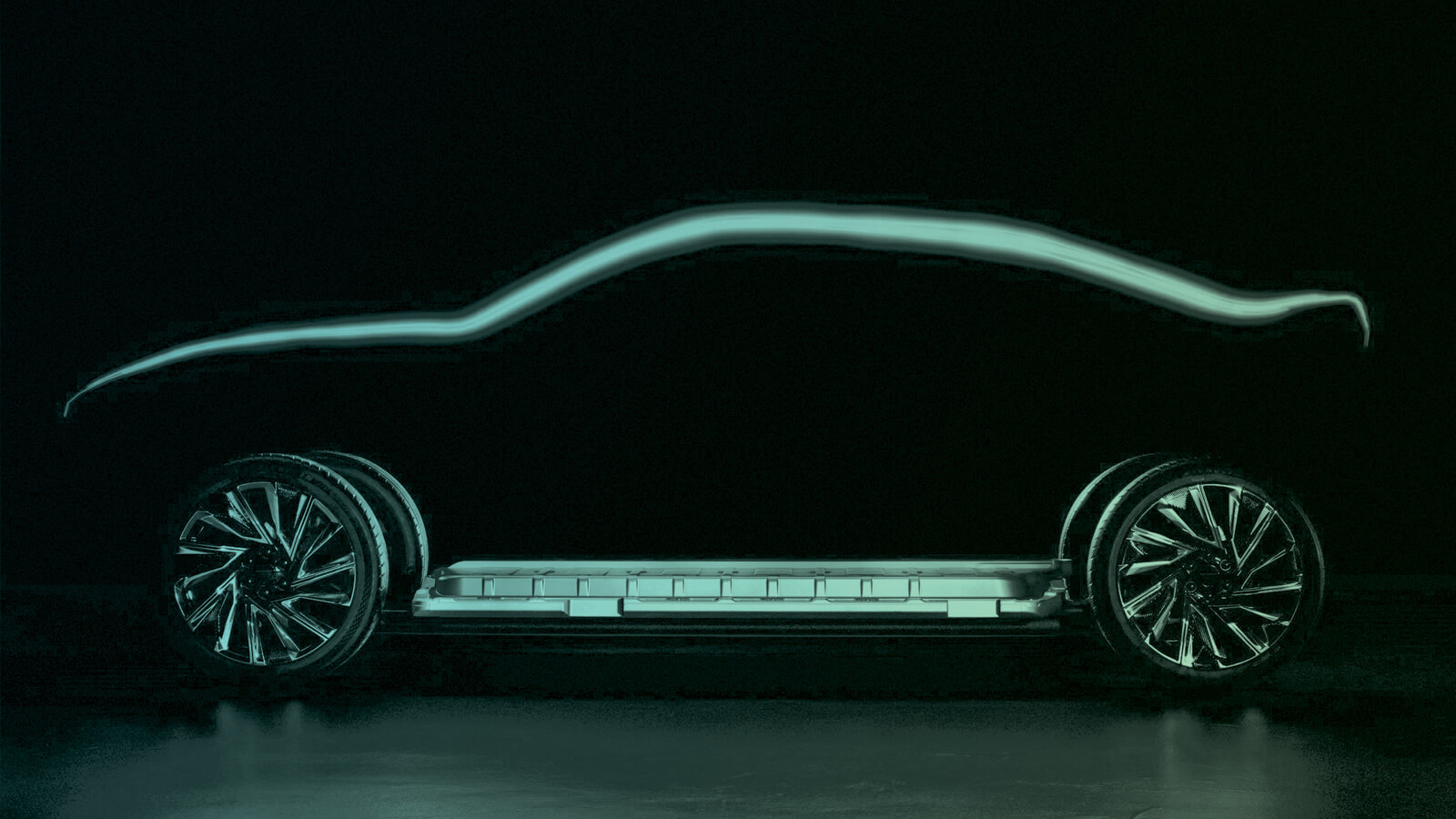Welcome to Tesla Motors Club
Discuss Tesla's Model S, Model 3, Model X, Model Y, Cybertruck, Roadster and More.
Register
Install the app
How to install the app on iOS
You can install our site as a web app on your iOS device by utilizing the Add to Home Screen feature in Safari. Please see this thread for more details on this.
Note: This feature may not be available in some browsers.
-
Want to remove ads? Register an account and login to see fewer ads, and become a Supporting Member to remove almost all ads.
You are using an out of date browser. It may not display this or other websites correctly.
You should upgrade or use an alternative browser.
You should upgrade or use an alternative browser.
Tesla, TSLA & the Investment World: the Perpetual Investors' Roundtable
- Thread starter AudubonB
- Start date
The Accountant
Active Member
They're projecting a Bitcoin impairment charge of $75m which would reduce my non-GAAP EPS forecast by $0.07 from $2.00 to $1.93.
I'm staying with the $2.00 as I am not convinced there will be a charge.
Gigapress
Trying to be less wrong
So my university's alumni magazine came in the mail yesterday. Cover was a picture of the EV Hummer. Apparently even a top university can't see through GM's BS. How did this get published?

 news.vanderbilt.edu
news.vanderbilt.edu

Electric Avenue: Vanderbilt alumni are helping steer General Motors toward a future driven by electric vehicle sales
General Motors' announcement that it would phase out combustion engines—the heart of its cars and trucks for more than 100 years—and move to an all-electric fleet by 2035 could have monumental implications for the global auto industry and broad efforts to combat climate change. The success of...
lafrisbee
Active Member
Today I Learned>
We got a lot of first world people in here with first world problems.
Ya all pay more in taxes more ways than I have made in my life.
We got a lot of first world people in here with first world problems.
Ya all pay more in taxes more ways than I have made in my life.
2
22522
Guest
Thank you for the link. I enjoyed the article. Almost anyone who does not own a Tesla sees the world though that lens. My father always told me that Vanderbilt was a good school. If you look at the roles the graduates have in one of the biggest companies in the world, it is impressive. They are doing good work with the framework/constraint set they have. The Volt was a significant vehicle.So my university's alumni magazine came in the mail yesterday. Cover was a picture of the EV Hummer. Apparently even a top university can't see through GM's BS. How did this get published?

Electric Avenue: Vanderbilt alumni are helping steer General Motors toward a future driven by electric vehicle sales
General Motors' announcement that it would phase out combustion engines—the heart of its cars and trucks for more than 100 years—and move to an all-electric fleet by 2035 could have monumental implications for the global auto industry and broad efforts to combat climate change. The success of...news.vanderbilt.edu
One thing you will see there is a lot of reactive behavior, just like the Harvard folks. Here is an example straight out the textbook.
Elon is building the best car.
GM is investing in the niches (that is why they need 20 models and preach that every customer is different).
All the places that GM is investing in have hard ceilings on market size.
Tesla is (by the book) giving new entrants into the EV space expensive to serve markets of finite size. Places from which you can hardly ever (never win). I remember some story about light bulbs... in Germany or something,,,
Key point, GM is moving into the market spaces Tesla wants them to move into - expensive to serve and growth limited. You see that in the article, but every player in the story is a good soldier.
So my university's alumni magazine came in the mail yesterday. Cover was a picture of the EV Hummer. Apparently even a top university can't see through GM's BS. How did this get published?

Electric Avenue: Vanderbilt alumni are helping steer General Motors toward a future driven by electric vehicle sales
General Motors' announcement that it would phase out combustion engines—the heart of its cars and trucks for more than 100 years—and move to an all-electric fleet by 2035 could have monumental implications for the global auto industry and broad efforts to combat climate change. The success of...news.vanderbilt.edu

General Motors names alumnus Mark Reuss company president - School of Engineering
School of Engineering General Motors names alumnus Mark Reuss company president Reuss will lead electric and driverless vehicle efforts Mark L. Reuss has been promoted to president of General Motors. Reuss will continue to lead the
RobStark
Well-Known Member

Average new car transaction price hits a record $45,031
It's the sixth consecutive month of record vehicle prices and represents a 12.1% increase (or $4,872 in cold, hard cash) over the same month a year ago and a 3.7% increase over the prior month.
MC3OZ
Active Member
We have seen from the Plaid Model S battery and motor analysis, that the Plaid Model S unsurprisingly uses a lot of Model 3 parts...GM is investing in the niches (that is why they need 20 models and preach that every customer is different).
Getting one model up to reliable high volume production helps create an ecosystem of affordable parts for other models.
Working on too many models at the sametime, means talent is diluted by spreading it across too many projects, the risk of using different parts in different models increases.
The big issue is supply of battery cells, no point in ramping the number of models beyond the point when cell volumes can support volume production of all of the models..
IMO lots of models seems like a phoney narrative, it disguises a lack of ambition on production volumes...
I'm sure we will find that the Cybertruck and the Semi also use a lot of Model 3/Y parts...
The one car that might use a lot of new parts is the Roadster, and those Roadster parts might slowly migrate down to cheaper models.
Most legacy car makers will do better if they focus on building 2-3 EV models is high volume and getting everything right... companies like Porsche are different, in their case it is 2-3 models in low volume....
loquitur
Member
Not at all. I was just disappointed in the shelving of the two products due toIs your argument that IBM’s hardware and software are static and will remain so?
"marketecture" of promoting something originally designed as a quiz show
answering machine.
I understand that IBM has made great progress in language understanding
and synthesis, ala GPT-3. Perhaps medical papers could not be generalized
enough for diagnosis with high confidence.
In another arena, it was great for computer chess enthusiasts to see an IBM
machinefinally beat a world champion, but that was not via AI, but "brute force".
The real neural-net based AI produced Google AlphaGo and the AlphaZero
for chess and shoji as well.
Your point is well-taken about future AI methods eventually displacing knowledge-workers
as much as factory workers or drivers doing physical tasks. It's always great to
see robotic progress in things like shoe-tying or clothes folding, for example.
Meanwhile, presumably more intellectual things like optimal protein folding
are being conquered first.
Leo raking it in - and not done buying yet:
StarFoxisDown!
Well-Known Member
Well at least I have Rob backing up my $2.12-$2.20 Q3 EPS estimate that I made a week backTesla Daily is doing his Q3 estimates right now:
His 15.6% operating margins will break the internet.Well at least I have Rob backing up my $2.12-$2.20 Q3 EPS estimate that I made a week back
RobDickinson
Active Member
Fore ref, the 'street' consensus is $1.50, with a range that doesnt get to $2.00, just look how tesla is accelerating from their consensus range.

The Accountant
Active Member
Here is an updated list of Q3 forecasts:

Mike Smith
Active Member
Taking on debt to invest is always a bad idea, IMHO.
I too think this is a bad idea, and I think TSLA is going to $10k+ eventually.
When someone in this thread asks for personal investment advice the correct response is to ignore them.
OT, but that magazine article has revisionist looking glass history at best.So my university's alumni magazine came in the mail yesterday. Cover was a picture of the EV Hummer. Apparently even a top university can't see through GM's BS. How did this get published?

Electric Avenue: Vanderbilt alumni are helping steer General Motors toward a future driven by electric vehicle sales
General Motors' announcement that it would phase out combustion engines—the heart of its cars and trucks for more than 100 years—and move to an all-electric fleet by 2035 could have monumental implications for the global auto industry and broad efforts to combat climate change. The success of...news.vanderbilt.edu
“……GM’s announcement came out of nowhere in January, the company has a long history of developing EVs, starting with its attempts at building a car called the EV1 in the 1990s. When that car proved unprofitable,……….. the company tried again two decades later with the Chevrolet Volt, a hybrid vehicle that could run on battery power for !!!!50!!!!! miles or so before its combustion engine would kick in.….”(downhill mostly)
semi-hysterical laughter.
We know why EV1 was unprofitable,
you could _not_ buy it, ever, though 1-2 may have escaped the crusher, so if it wasn’t sold, it couldn’t make a profit, by definition.
The Volt was designed with a 16 kilowatt battery, of which barely 10.1 were usable, to _exactly_ take advantage of the $7,500 tax credit, with $4 left over, (the numbers multiplied to $7,504) and could go 50 miles on a charge, downhill, in warm weather, otherwise, 30-32 at best, with “genteel, non aggressive” driving.
it also did a lot of ERDTT ((gas) Engine Running Due To Temperature)
Last edited:
The Accountant
Active Member
Well at least I have Rob backing up my $2.12-$2.20 Q3 EPS estimate that I made a week back
Watching his Q3 video, it's obvious he has done the detailed work required.
His $2.16 non-GAAP EPS looks solid.
Watching his Q3 video, it's obvious he has done the detailed work required.
His $2.16 non-GAAP EPS looks solid.
I admit it looks solid, but the skeptic in me can't believe it's going to be that high. I mean I'd love to see it, but man its quite the jump up.
Here is an updated list of Q3 forecasts:
No offense, but I hope Rob wins
Similar threads
- Locked
- Replies
- 0
- Views
- 3K
- Locked
- Replies
- 0
- Views
- 6K
- Replies
- 6
- Views
- 5K
- Replies
- 6
- Views
- 11K
- Locked
- Replies
- 27K
- Views
- 3M


